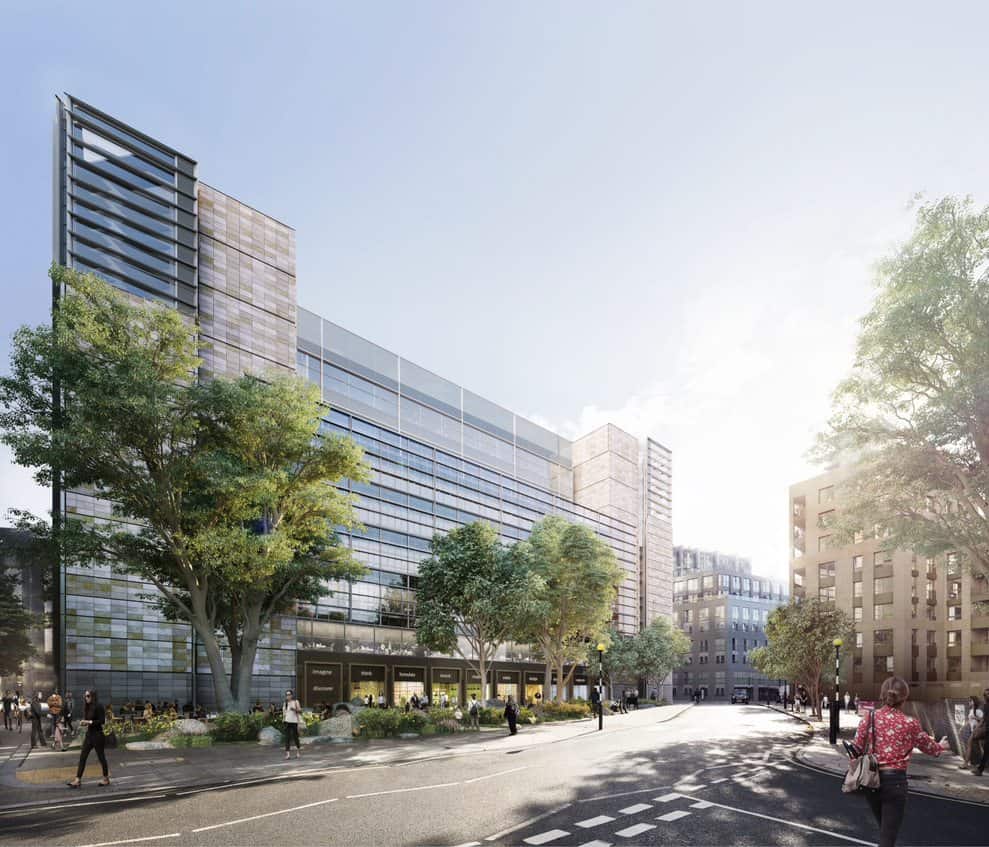Decarbonising real estate starts with intelligent planning and design
Decarbonising our existing built environment is one of the biggest challenges facing us in reaching net zero carbon by 2050. Estate owners must strike a careful balance between making investment and driving efficiencies, as Helena Rivers, Marcin Wojewski, Nichola Gradwell and Florentino Bercasio report.
Reducing the carbon impact of existing building stock is a time-critical task for the industry, as the consequences of human-induced climate change are now tangible. In 2022 alone, the UK experienced its warmest year on record, according to Met Office data. The past year has also seen heavy rainfall, flooding, urban wildfires, and other extreme weather conditions in the UK and on a global scale – all of which are being experienced with increasing frequency.
The scale of the decarbonisation challenge cannot be underestimated. Existing building stock accounts for approximately 23% of UK carbon emissions, according to a 2019 Royal Institution of Chartered Surveyors report. In the housing sector alone, the UK Green Building Council estimates that the UK’s 29 million homes must be retrofitted at a rate of 1.8 every minute to achieve net zero by 2050.
The public sector
Despite immense funding pressure, the UK public sector has in many cases led the way in estate decarbonisation investment. Initiatives such as the Public Sector Decarbonisation Scheme (PSDS), launched by the Department for Business, Energy and Industrial Strategy, are injecting cash into improving public buildings by stripping out carbon and energy inefficiencies.
The PSDS has to date provided around £1.6 billion in grant funding to help public sector organisations improve the energy use of existing buildings, and to reduce their reliance on fossil fuels. Additionally, the Public Sector Low Carbon Skills Fund provides grants for public sector bodies to engage specialist advice to develop decarbonisation plans for their estate.
The private sector
For private estate owners, the investment case for decarbonising their buildings centres around both highlighting their ESG credentials and preventing assets from becoming stranded. Assets become stranded when their value is vulnerable to external factors such as changing regulation, technological innovation or evolving social norms.
In real estate, legislation preventing assets with poor energy efficiency from being occupied is a growing risk. There is also rising pressure from fellow asset owners: initiatives such as the Net-Zero Asset Owner Alliance requires members to reduce emissions across global property portfolios.
To mitigate this risk, tools are emerging to help estate owners assess the likelihood of their assets becoming stranded. The European Union (EU)-funded Carbon Risk Real Estate Monitor (CRREM) is a tool that allows investors and property owners to assess the exposure of their assets to stranding risks based on energy and emission data and the analysis of regulatory requirements.

Factoring energy efficiency into design
Cutting carbon by increasing energy efficiency typically involves improving the thermal efficiency and air tightness of the building fabric, along with the installation of energy-efficient plant and smart building control technology. Energy assessments will provide guidance on what is possible at each site.
A fabric-first approach is important. Improving mechanical, electrical and plumbing engineering (MEP) systems in a building with a poorly performing external envelope has limited value. In contrast, upgrading facades, adding insulation, and increasing air tightness are all effective interventions and are often the first point of focus when taking on a retrofit challenge.
That said, improving the heat efficiency of the building fabric can often create an increase in whole-life carbon. Given their carbon intensity, is only advisable to undertake full cladding replacement if the existing system is damaged, performing poorly or nearing the end of its useful life. A holistic approach should be taken to considering the impact of building fabric changes – overheating and condensation, for example, can be consequences of failing to consider how a replacement building fabric will interact with existing building components.

Once decisions about the external fabric and structure have been made, it is important to understand how a building is used. Heating, cooling and lighting unoccupied space is costly in both monetary and carbon terms, yet if building occupier patterns are fully understood, this is a relatively easy way to quickly cut carbon output and energy costs.
This can be done through installing building-level controls to enable efficient building management. Controls are key to ensuring energy use is minimised and the benefits of natural ventilation are explored and incorporated where feasible. Incentivising efficient occupier behaviour is another important way to reduce energy demand.
Introducing onsite renewable energy generation capability is something developers are often keen to explore, as it is typically a highly visible example of a building’s efforts to be more sustainable and can help achieve higher EPC ratings. However, it should be noted that as electricity sourced from the national grid decarbonises, the operational carbon benefit of onsite production lessens.
Full grid decarbonisation is still decades away, but we are swiftly moving towards renewables becoming the dominant source of on-grid power. Onsite generation has other valuable benefits, such as energy security and the potential to sell energy to the grid, but electrification of existing plant has the biggest impact on carbon reduction.
Creating holistic decarbonisation plans
For real estate owners that are yet to consider these issues, thinking ahead of time and having a plan in place for estate decarbonisation will enable them to be nimble and take full advantage when new funding streams or supportive initiatives are announced. Tax policy is one area in clear need of greater government support. That UK policy currently favours new build developments over refurbishment is bewildering in the face of our climate goals, and needs to change.
Public sector support – directly through grant funding, targeted initiatives, and regulatory change – is key, but is only one part of the solution. Private sector action on estate decarbonisation is crucial and is an important part of the jigsaw which cannot be ignored. More instruments are needed to accelerate this market, whether in the form of a carbon tax, or a shift in the relative prices of gas and electricity or other solutions.
The construction industry, the financial community, and asset owners must all pick up the pace on estate decarbonisation if both the UK’s and other international carbon targets are to be achieved. In the face of soaring inflation, a recession, labour and materials shortages and a lack of knowledge in the sector on the topic, it is an indisputably difficult task. Success in these conditions may be about trade-offs and compromises – and collectively creating holistic decarbonisation plans to break the decarbonisation challenge down into achievable steps, one project or estate at a time.
Cost model: Estate decarbonisation
We have built a cost model for the core baseline costs for different interventions that should be taken into account before building a more detailed, and informed, view of project-specific costs. Indicative cost ranges provided in this cost summary are in Q4 2022 prices and rates reflect the national average.
You can download the cost model here.
This is an abridged version of an article that was first published in Building magazine. You can read the full article by clicking here.







